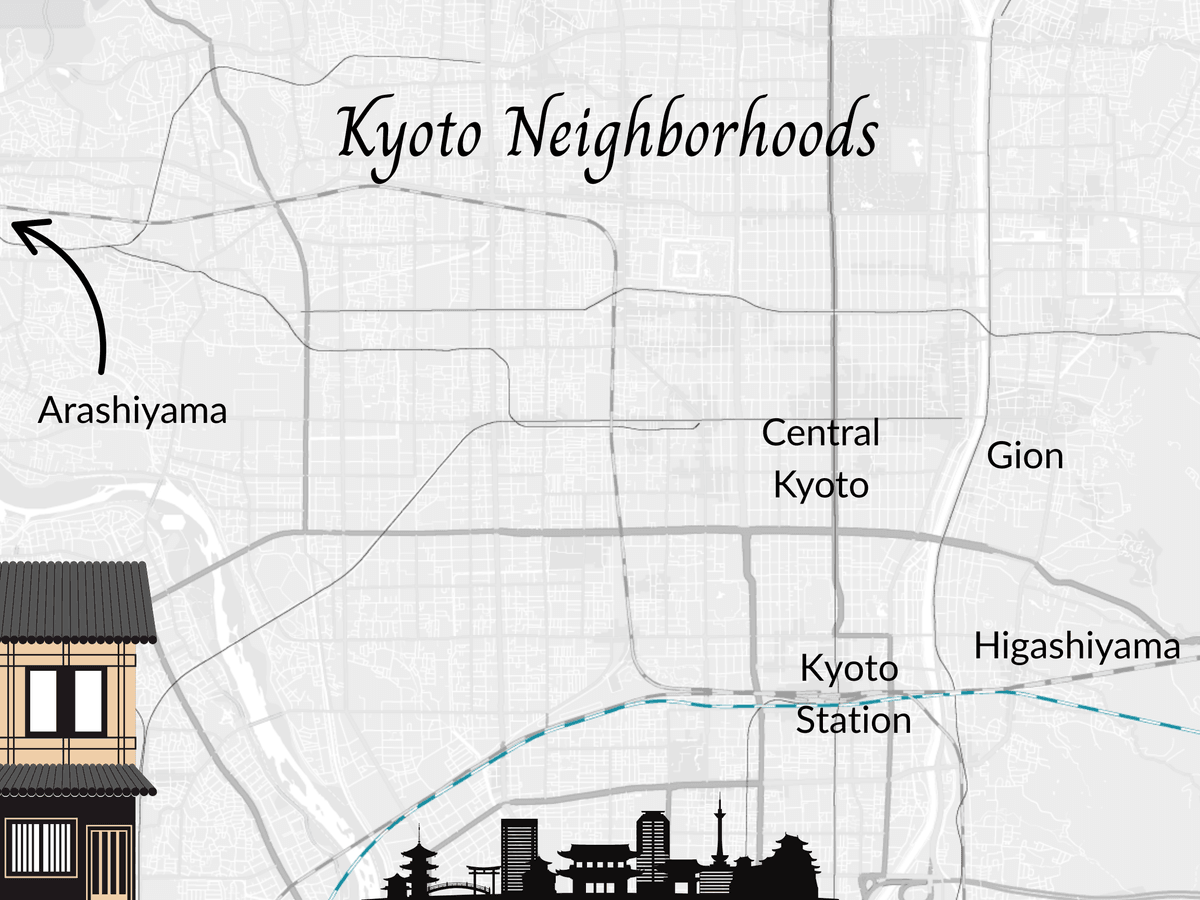Kyoto is one of the most famous places in Japan to visit. With over 2,000 temples and shrines, easy access to additional UNESCO World Heritage sites, and a community of working Geisha, it's no wonder that more than 50 million people visit Kyoto each year.
However, with the numbers of visitors at any given time often double that of permanent residents, the key to enjoying this ancient capital is often finding less crowded neighborhoods to stay in and explore. And unlike Tokyo (Where to Stay in Tokyo), which has an excellent subway system, Kyoto’s bus system is overwhelmed, so I recommend planning to walk or bike and take taxis when exploring Kyoto.
Kyoto Neighborhoods

Kyoto Station
Unlike in many other cities, staying near Kyoto Station is probably not your best option. This area is more modern, and there isn’t a ton to see and do in this area. However, with the train connections, this is a convenient area to stay in if you’re planning to do a lot of day trips.
Pros: Great train connections for day trips to places like Nara, Osaka, Himeji, and Lake Biwa. Close to Kyoto Tower, Toji Temple, and the excellent Kyoto Railway Museum.
Cons: This area is more modern, and doesn’t have the aesthetic appeal of some of Kyoto’s older neighborhoods.
Gion and Higashiyama
The most popular neighborhood for tourists to stay in and visit, and with the highest concentration of hotels and holiday rentals, your opinion of the Gion and Higashiyama area will depend mostly on your tolerance for crowds. Home to famous sites like Kiyomizu-dera and Yasaka Pagoda, this area is packed at any time of year.

Pros: Tons of accommodation options at all price points within a short walk of famous temples, shrines, and restaurants. The Gion neighborhood is where you’ll have the best chance of seeing a Maiko (trainee Geisha) walking to and from appointments.
Cons: Crowds, crowds, crowds! Much of this area is also not very close to the subway, so walking is your best option for sightseeing in this area. Larger vehicles are not allowed to drive on some streets in Gion, so if you need to take a larger taxi, you may need to meet it a few blocks from your hotel if you’re staying in the heart of the Gion district.
Central Kyoto
Central Kyoto is my preference when staying in Kyoto, as it is much less crowded than Gion and Higashiyama, and is so fun to walk around. There are lots of great hole in the wall restaurants here, as well as tiny shops selling everything from stationery to antique kimonos. There aren’t a lot of famous sites within an easy walk, but much of this area is convenient for the subway.
Pros: Calm, walkable neighborhood with great dining options and (fairly) good subway connections.
Cons: Few 5*/deluxe accommodations in this area, and not walkable to famous sites.
Arashiyama
The Arashiyama district of Kyoto is in the northwest corner of the city. This area is famous for its bamboo groves and monkey park. Along the Katsura River, there are some really lovely ryokan-style options (What is a Ryokan). However, this definitely isn’t my favorite place in the city to stay. Without a car, the rest of the city is hard to reach, and the area around Arashiyama’s train stations is very crowded.
Cons: Without a car, this is not a convenient place to stay in the city. During the day, Arashiyama can get very crowded with tourists.
Staying Outside the City
With frequent trains, sometimes staying outside the city proper can be just as convenient, and much less crowded, than staying somewhere in the city.
Otsu
Located just 15 minutes from Kyoto Station on the banks of Lake Biwa, the town of Otsu can be a great alternative to Kyoto for those looking for a more laid-back atmosphere. In addition to Kyoto, you can easily explore the Lake Biwa area, including the floating hall of Ukimido and Hikone, home to one of the 12 original castles of Japan.
Osaka
As Osaka and Kyoto are just 30 minutes apart by train, I almost always recommend picking 1 city to stay in, and taking the train to the other for a day trip or evening (trains run frequently until midnight). Osaka is great for those who want a more modern hotel experience, and want to stay in a city with great local food and nightlife. Osaka is so culturally different from Kyoto, that I would recommend a visit to Osaka whether or not you opt to stay overnight.
Ryokan Stay
In Kyoto Prefecture outside Kyoto City, there are some nice places for a ryokan stay. However, if you’re planning to sightsee in Kyoto City while staying at a ryokan, I would recommend renting a car to get around more easily.
This option is best for those on a tight schedule, where you would be combining your Kyoto sightseeing with a ryokan stay. However, if you have more time, I would highly recommend picking a hot springs town where you can relax and unplug while enjoying your ryokan, and staying in a hotel or machiya while in Kyoto.

